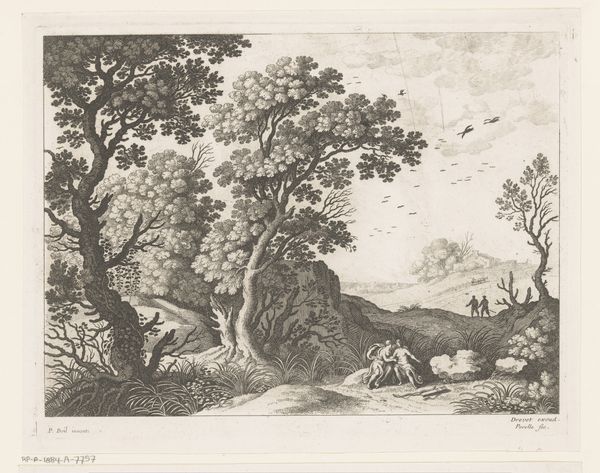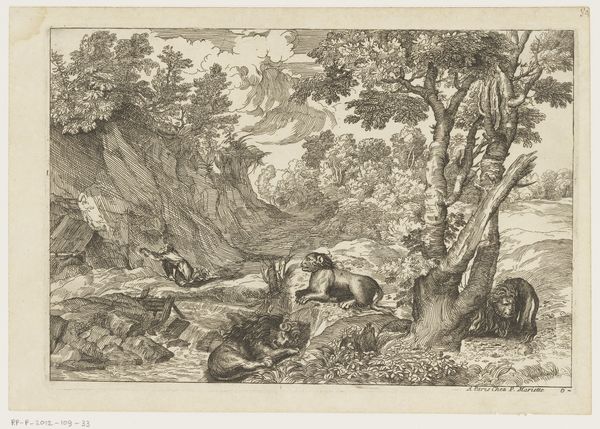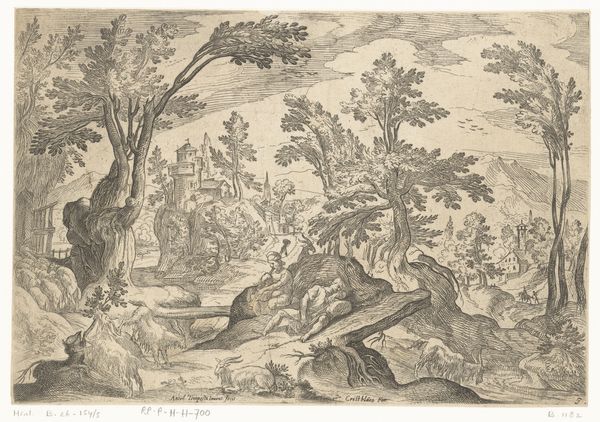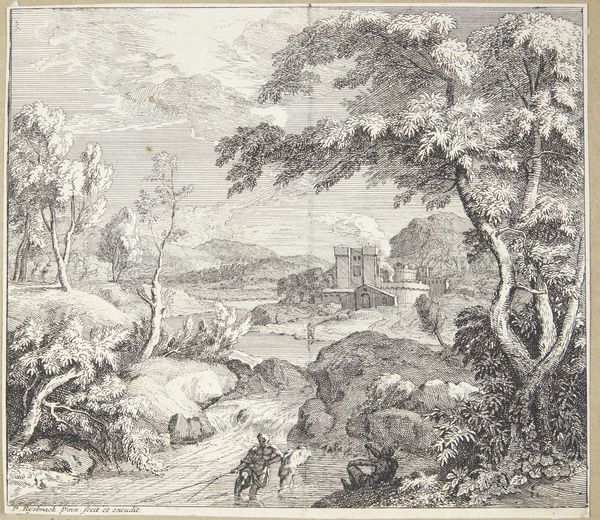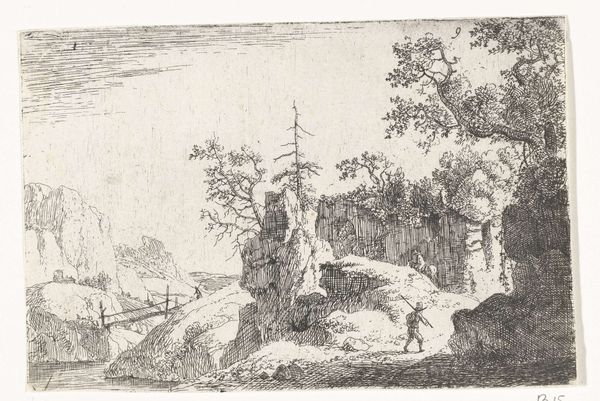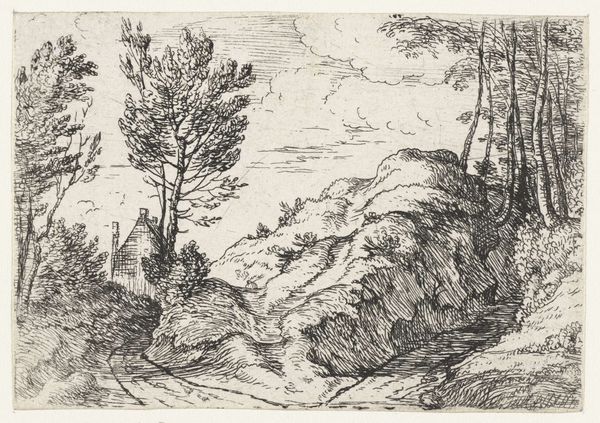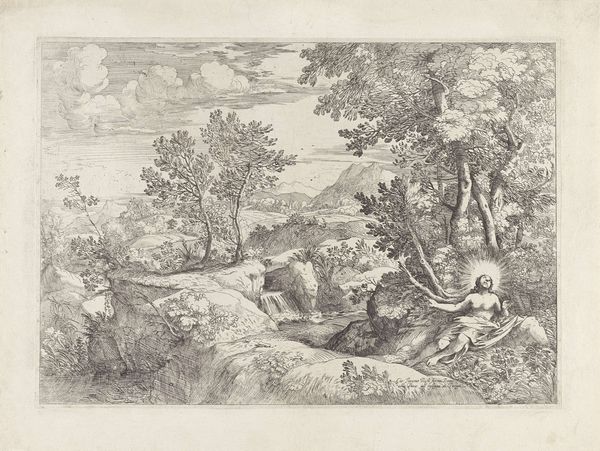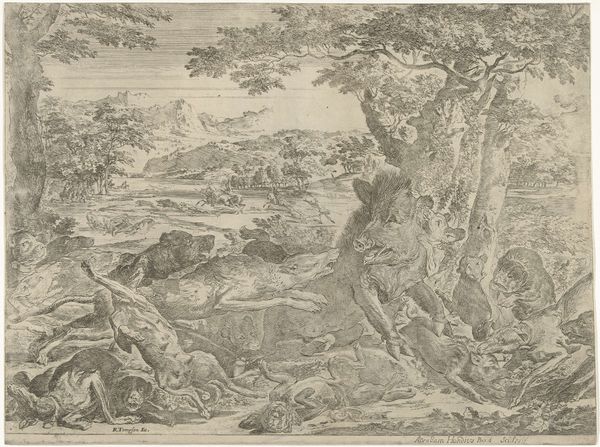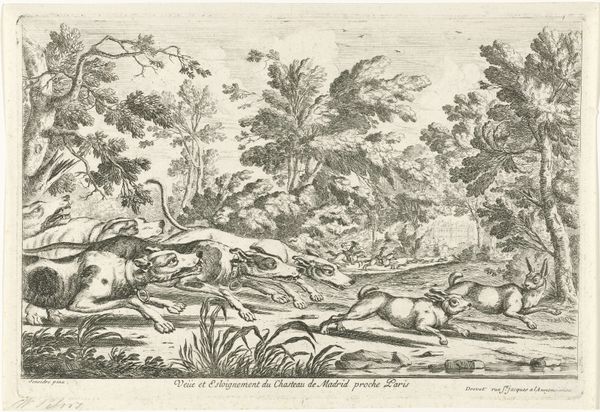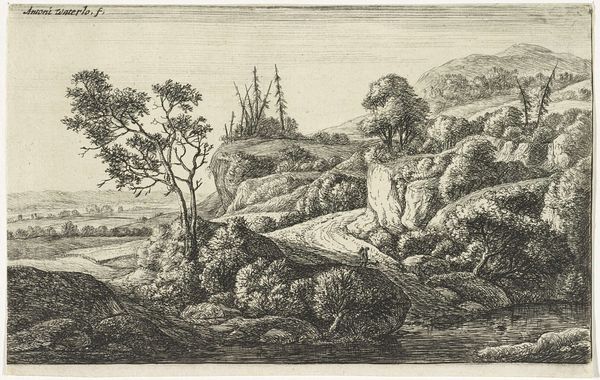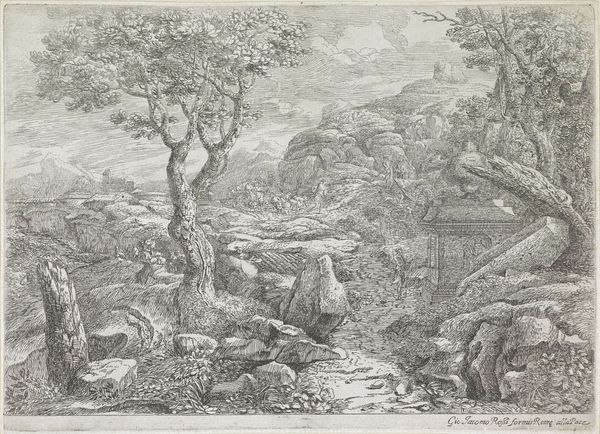
drawing, etching
#
drawing
#
baroque
#
pen drawing
#
etching
#
landscape
#
line
#
realism
Dimensions: height 234 mm, width 334 mm
Copyright: Rijks Museum: Open Domain
Johannes Glauber made this etching of a rocky ravine sometime between 1661 and 1726. Etching is an intaglio printmaking process that uses acid to cut into a metal plate, here likely copper, to then be inked and printed. The process itself influences the aesthetic of the artwork. Notice the dense pattern of tiny lines, built up through repeated controlled biting of the plate, that creates tone and depth. This linear quality gives the rocks and trees their distinctive character. The fine lines suggest the amount of skilled labor that went into creating the plate. This contrasts with the apparent ruggedness of the depicted landscape, a romantic vision of untamed nature. Etchings like this one, therefore, weren't just about representing a place. They were also about demonstrating the etcher's mastery and about a growing appreciation of the natural world as a subject of artistic and intellectual interest. The artist's skillful work and the scene's rough appearance create a dynamic tension. It reminds us that understanding a work of art involves appreciating both the image and the intricate production processes behind it.
Comments
No comments
Be the first to comment and join the conversation on the ultimate creative platform.


